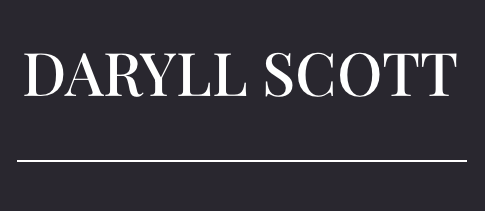Unleash Your Wild Intelligence
Whole-Minded Answers to Human Questions in a Changing World
Daryll Scott is an expert in unconscious change.
Author, Speaker, Consultant, Trainer & Coach.
Platforms
Daryll Scott is a featured expert on several popular platforms
Valuable Communication
Making connections and articulating value through conversations, presentations, negotiations, and customer experience (CX).
Blog...
Articles about culture, communication, leadership, systems thinking, behavioural science and change

“To be the most (insert success criteria) company in the (insert sector) industry.” is not a vision; it’s a commercial ambition. A vision is precisely that. You need to be able to close your eyes and imagine it. The images in the backs of our minds and the emotions they evoke drive our everyday behaviour toward an outcome. As you will have seen from previous articles, I think ‘bottom-up’. My consulting, consulting and behavioural design works by evaluating everything based on how it lands with an individual human nervous system. In this article, I will introduce the overlooked, essential human element: LinkedIn has always been my favourite social media platform. I don’t even think of it as social media; I think of it as a functional tool. Unlike other platforms that evolved based on user behaviour with the tail wagging the dog, LinkedIn has always known what it’s there to do. Their vision is: “To create economic opportunity for every member of the global workforce.” We all know what that means. It is clear, coherent, purposeful, and evokes mental images and feelings if you think about it. Most consultancies (and Chat GPT) will suggest that your vision should be customer-focused, have a global impact, be innovative and high quality, be simple and based on values. Many inspirational vision statements have those qualities, but that’s not why they work. As with most MBA thinking, this is an accurate, rational breakdown, but the human element still needs to be added. You could book a leadership away day and follow these principles to author a statement that should work; you may even design some funky slides and select some emotive music, but the vision could still fail to catch fire when you put it out there. Over the past two decades, I have seen so many businesses wasting time on vision and strategy that won’t work because it doesn’t connect with the individual's ambition, reality or sentiment. It may be unrealistically aspirational, incoherent, not related to the activity of the business, incongruent with how the business is run, top-down thinking that only sounds good to the board and shareholders, or based on ‘authored’ values that do not faintly resemble actual priorities and behaviour people experience on an everyday basis. If you want to un-MBA your thinking and connect with people, I suggest you challenge your vision by empathising with the following human needs: “I need to see what you mean” When you hear or read IKEA ’s vision: “To create a better everyday life for the many people.” you can close your eyes and see it. I don’t know about you, but I see beautiful, practical, cheap stuff filling the homes of millions of people who would otherwise have to put up with ugly, impractical, cheap stuff. It is a congruent expression of what IKEA is here to do. “I need to be included” Consider this vision statement by Nike : “To bring inspiration and innovation to every athlete* in the world.” (*If you have a body, you are an athlete). Reference to athletes ignites the inspiration and joy of celebrating our sports heroes, but the real genius is the last bit in brackets. It makes all the difference. For your vision to work, there must be no barrier to entry. “It needs to make sense to me” Check out the plain language simplicity of this vision by Google : “To provide access to the world’s information in one click.” Could it be simpler? We know what the objective is at every level. We know what every product is innovating towards. From a human perspective, it creates a clear sense of purpose in the world and clarity of mind. “I need to believe you” You may disagree with Elon Musk, but do you doubt him? Tesla ’s vision: “To create the most compelling car company of the 21st century by driving the world’s transition to electric vehicles.” Has been demonstrated in reality. When Tesla set out, their vision was ridiculed by the automotive industry, but now we all believe it. Their ambitious innovation and their agile speed to market have made Tesla the second most profitable car manufacturer in the world and forced other manufacturers to catch up. “I need to feel it” Patagonia ’s emotionally leaded vision, “We’re in business to save our home planet.” tells us what they are all about. The choice of words “Our home planet” makes all the difference. Substitute the words ‘the environment’, and the emotion diminishes. I doubt they will achieve this outcome single-handedly, but the challenge is so huge and emotively purposeful that the ultimate outcome doesn’t matter. It’s an emotive reason to choose their products or turn up for work each day, and it’s a bright guiding light to shine on every tiny decision they make. “I need to know who to be” When I worked with Apple a decade ago, I was blown away by the culture. Everyone I worked with had a tacit sense of what was Apple and what wasn’t. Their vision is “To make the best products on earth, and to leave the world better than we found it.” It focuses on the product, the customer experience and the company's impact on the world. If you become overly concerned about anything that isn’t in service of those things, you are not Apple. The backfire effect: There is only one thing worse than no vision - having a vision that provokes a negative reaction. I find Disney ’s vision deeply disappointing. “To entertain, inform and inspire people around the globe through the power of unparalleled storytelling, reflecting the iconic brands, creative minds and innovative technologies that make ours the world’s premier entertainment company.” It’s a fair reflection of what they are here to do and how they do it, but it’s not visionary. Too many business-speak bolt-ons have taken them away from their brand essence of “Magic”. Disney tells the stories that develop the moral compasses of our children; its creativity and innovation inspire us as adults, and it creates shared experiences and a sense of belonging for families and communities. Disney influences the quality of our lives - They need to call me - I will help them lose the management speak! I’m also disappointed when brands have a vision but lose their way. They fail to stay true to it, or it gets watered down, and it always seems to be for commercial reasons - saving money or making more. Starbucks has a great vision: “To inspire and nurture the human spirit – one person, one cup, and one neighborhood at a time” , but when you get a mental picture of these words and compare it to your local Starbucks franchise, do they match? I’m not criticising the vision statement; it’s a really good one, I’m disappointed that the business has failed to pay enough attention to service standards and environment to keep the ‘vibe’. The Facebook/Meta vision: “To give people the power to build community and bring the world closer together.” started out as true, but the algorithms designed to keep us scrolling and fuel their commercial performance create echo chambers and divide us as a society. For this reason, the vision creates a negative experience. To summarise: I think of a vision statement as imaginative storytelling. I believe it should be evaluated based on the visual and emotive response it creates in the reader/listener. It needs to be authentic, it needs to get the response you want, and then you need to stick to it. Do you agree?

Intending to be as helpful as possible, I have written a longer-than-usual post. I’m covering this in more detail than I normally would because I believe the ability to have performance conversations, give feedback, and approach potentially difficult conversations in a supportive, challenging, and motivational way is vital for any leader or manager. So many leaders find these essential conversations tricky, but with some changes in perspective and a slightly different approach, they can change from being the ones you dread to the ones you look forward to. A few years ago, one of my colleagues watched me give some fast, clear, informal feedback to one of my team members. Afterwards, they said, “You just told that person clearly that what they have done is not good enough, and they left the room happy and energised. How the hell did you do that?” Like all leaders, I have my blind spots and weaknesses, but I am consistently good at motivating, developing and leading people. I have designed workshops and coached hundreds of leaders to increase their awareness and skill in these interactions. I even wrote a book about it in 2008 with my business partner at the time. This continues to be the most challenging and most important interpersonal leadership ability: Research by Bain & Company found that, on average, an inspired employee is 2.25 times more productive than a merely satisfied one. Can you think of anything else you could do as a leader that makes this difference to organisational performance? Interactions that encourage and inspire should be little and often. Yet, while leaders analyse their spreadsheets, define their aspirational strategies, and polish their presentations, it’s easy to forget that it’s the everyday, on-the-job interactions that create the performance culture. The key to mastering potentially difficult interactions and making them motivational is not evidence, preparation or professionalism, it’s authentic interpersonal communication. In this article, I will answer the following questions: Why is it so tricky? What can you do to set conversations up for success? How can you use feedback to coach change? What if everyone wanted feedback?
Culture OS
The Cultural Operating System (OS) is a manifesto for cohesion, engagement and performance







